Al Serkal Avenue: Exploring Dubai's Artistic Hub
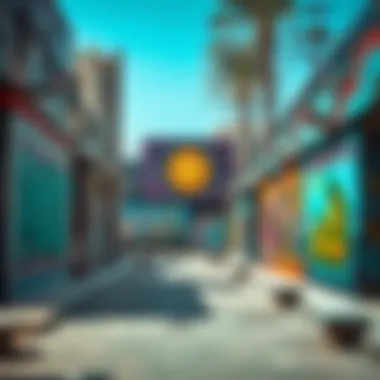
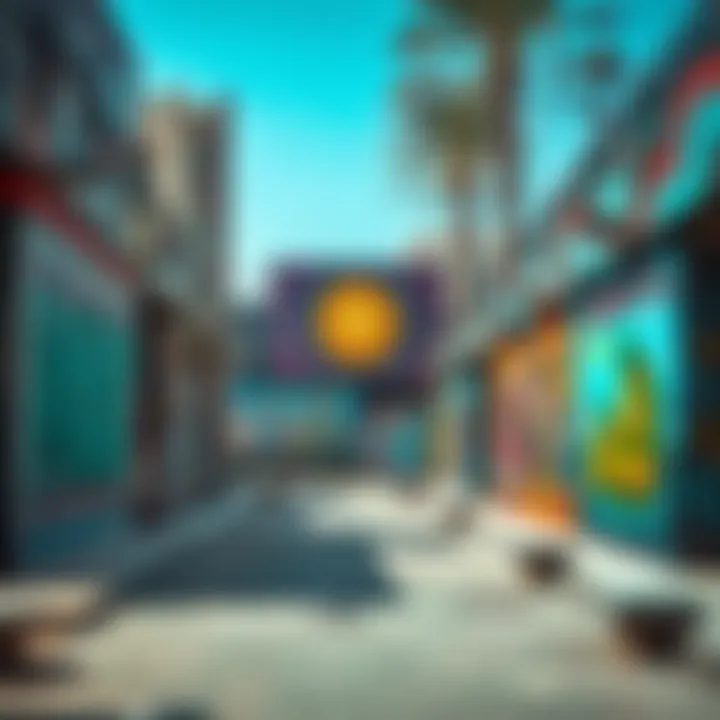
Intro
Al Serkal Avenue stands as a beacon of creativity amid the bustling backdrop of Dubai. Once an industrial zone teeming with factories and warehouses, this vibrant cultural hub has transformed dramatically, now home to a dynamic array of art galleries, design studios, and creative workshops. This metamorphosis reflects not just an aesthetic shift, but a groundbreaking evolution in the cultural landscape of Dubai. With the UAE increasingly positioning itself as a global art destination, understanding the historical context and current trends of Al Serkal Avenue becomes essential.
In its heart, this locale pulses with energy, drawing both established and emerging artists from different corners of the planet. The intertwining of art and real estate here is fascinating; as artistic endeavors flourish, so does the demand for space, leading to unique collaborations and investments that shape the neighborhood's future.
The journey through Al Serkal Avenue is not just about appreciating art; it’s about diving into a rich narrative of economic potential and cultural significance. As we delve deeper into the sections dedicated to market trends and investment strategies, we will uncover the driving factors that make this avenue a pivotal point for those interested in the art world and the realm of real estate, paving the way for insightful discussions that address the interests of investors, buyers, and real estate agents alike.
Prelude to Al Serkal Avenue
Al Serkal Avenue stands as a pivotal locus in Dubai’s cultural landscape, reflecting not merely the transformation of an area but the blossoming of an entire artistic community. This space offers insights into the interplay between creativity, commerce, and social connectivity. Understanding this avenue is crucial for several reasons. Firstly, it acts as a microcosm of the larger art scene in Dubai, where local talent meets international standards, fostering a rich exchange of ideas and creations. Secondly, it is increasingly significant for investors and buyers, as the cultural developments here can directly impact property values and opportunities in the surrounding area.
By diving into the nuances of Al Serkal Avenue, one can appreciate how art not only enhances the environment but also cultivates a sense of belonging and community among both residents and visitors alike. Furthermore, the avenue serves as a case study of the impact of strategic investments in culture—as creative businesses flourish, they contribute to a vibrant economy that attracts diverse populations.
Overview of the Location
Al Serkal Avenue is nestled in the Al Quoz district, a location traditionally known for its industrial heritage. The area has morphed from its former status, with artistic galleries and cultural spaces peppering the landscape, inviting exploration and engagement. Within its vicinity, one can find both established and emerging talent across a variety of media—from contemporary painting to experimental installations.
Being easily accessible by major highways, it still manages to retain a sense of seclusion. This combination of accessibility and sanctuary makes it a favorite spot for art enthusiasts, collectors, and even casual visitors looking to soak in the creative atmosphere. Surrounding amenities, like trendy cafes and other boutiques, enhance the overall experience, turning a mere visit into an engaging day out.
Historical Background
The journey of Al Serkal Avenue is deeply rooted in its industrial past. Established primarily as a warehouse area, it housed manufacturing and storage facilities for decades. However, towards the beginning of the 21st century, a shift began to unfold as artists sought alternative spaces to create and exhibit their work, leading to an influx of creativity that gradually redefined the avenue.
The initial transformation was marked by a handful of pioneering galleries that recognized the potential of these large, cavernous spaces. Over time, these galleries evolved into hubs of cultural exchange, showcasing regional and international artists alike. As the area grew, so did its reputation—what was once a forgotten part of the city became a beacon of innovation and artistic expression.
This evolution didn’t happen overnight; it required vision and effort from both the local community and supportive entities that believed in the power of art to uplift and connect. The establishment of art fairs and festivals in the area further solidified its status, drawing attention not just locally but on the international stage as well.
"Al Serkal Avenue has transformed a gritty industrial district into a vibrant art enclave, showcasing the resilience and adaptability of the creative spirit."
As art communities strengthened, a symbiotic relationship began to form with local businesses and real estate development. The cultural importance of the avenue continues to expand, making it a vital player in Dubai’s artistic and economic landscapes.
The Evolution of Al Serkal Avenue
Al Serkal Avenue stands as a testament to the dynamic and ever-changing landscape of Dubai, reflecting the city's ambition to merge commerce with culture. Understanding the evolution of this artistic hub provides crucial insights into how it became a celebrated enclave for creativity and innovation. This section delves into the transition from an industrial area to a center for artistic expression and examines the shaping of a cultural identity that resonates with both local and global audiences.
Transition from Industrial Space
Originally, Al Serkal Avenue was a bustling industrial zone, characterized by warehouses and manufacturing units. In the early 2000s, this area began to undergo significant changes, primarily driven by the vision of a few forward-thinking entrepreneurs. These individuals recognized the potential of repurposing industrial spaces into vibrant art venues. This transition marked a pivotal moment in the history of the avenue. The transformation wasn’t merely cosmetic; it involved a reimagining of the purpose and potential of the space.
As galleries like Leila Heller Gallery and Art Sawa began to move into the area, the surroundings started changing. Empty warehouses metamorphosed into bright, inviting spaces showcasing contemporary art. This redevelopment attracted a variety of artists, curators, and collectors eager to be part of a burgeoning artistic community. The result was a unique fusion of the old and new, where the remnants of industrial architecture provided an edgy backdrop for modern expressions of creativity.
This shift did not only boost the local economy but also changed perceptions around Dubai. No longer just a hub for commerce and tourism, the city began to be recognized for its cultural diversity and artistic innovation. Supporting local talents became a priority, as established names collaborated with emerging artists, enriching the cultural tapestry of the avenue.
Development of the Cultural Identity
Following its transformation, Al Serkal Avenue began shaping a distinct cultural identity, marking it as a cornerstone of Dubai’s art scene. The avenue blossomed into a neighborhood where artistic expressions flourished, creating a dialogue between various artistic disciplines, including visual arts, music, and performance.
The cultural identity within Al Serkal Avenue is multifaceted. Here, you can find everything from edgy contemporary installations to classic art forms, all under one roof. The presence of institutions like the Alserkal Arts Foundation fostered community engagement and development, holding workshops and artist talks, which further enriched the cultural offerings and involved the community.
This avenue also hosts events that draw both locals and visitors, such as art fairs and exhibitions. These gatherings allow for an exchange of ideas among artists, art lovers, and collectors, creating a vibrant atmosphere that encourages creativity. In many ways, Al Serkal Avenue has become a microcosm of Dubai itself—where global influences intermingle with local narratives.
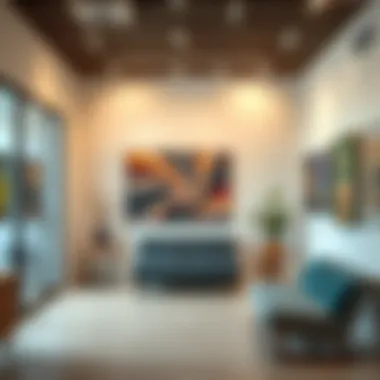
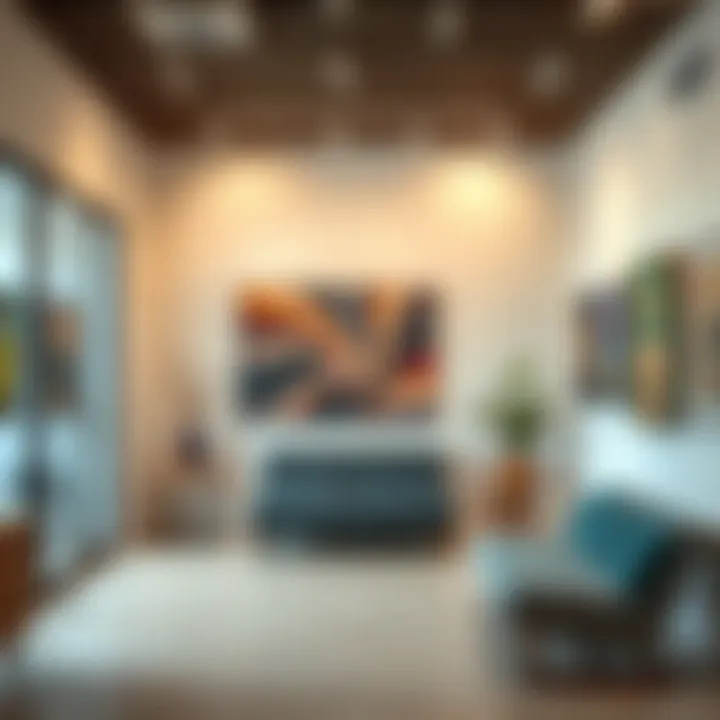
The evolution of Al Serkal Avenue is essential to understanding the broader context of Dubai's cultural ambitions. It illustrates how an area can transcend its original purpose and become a beacon of creativity and innovation, positively impacting the community and local economy. This transformation from industrial to cultural hotspot provides critical insights for investors and art enthusiasts looking for opportunities in this dynamic landscape.
Key Art Galleries and Institutions
The importance of key art galleries and institutions within Al Serkal Avenue cannot be overstated. They serve not just as spaces for displaying art but as vibrant hubs where creativity meets commerce, and community engages with culture. These establishments play a crucial role in shaping the avenue's identity as a contemporary art district, attracting global talent and fostering local artistry. For investors and art enthusiasts alike, understanding these institutions provides insight into the evolving dynamics of Dubai's art scene, showcasing not only artistic expressions but also potential financial returns.
Notable Galleries
Art Sawa
Art Sawa stands as one of the prominent figures in Al Serkal Avenue's artistic landscape. Focused primarily on contemporary art from the Middle East, North Africa, and South Asia, the gallery emphasizes the rich narratives and diverse perspectives within these regions. One key characteristic of Art Sawa is its commitment to accessible art, which has fostered widespread appreciation among various audiences.
A unique feature of Art Sawa is its regular hosting of solo and group exhibitions, often collaborating with both emerging and established artists. This commitment to showcasing diverse talent ensures a fresh perspective on the evolving art styles influenced by social and political climates. However, the gallery also faces challenges, such as market saturation in Dubai's art scene, which may impact its visibility and sales in the fast-paced environment.
Leila Heller Gallery
Leila Heller Gallery brings a unique twist to Al Serkal Avenue through its innovative approach to art selection and community engagement. This gallery focuses on a global perspective while actively promoting Middle Eastern artists. What sets it apart is its integration of contemporary art with broader cultural dialogues, encouraging dialogue around pressing issues like identity, migration, and the environment.
Leila Heller clearly champions inclusivity; its educational program engages not only collectors but also the broader community through workshops and talks. The gallery’s dedication to fostering an inclusive art conversation makes it a vital stop on the avenue, though the burden of curatorial responsibility can sometimes lead to challenges in maintaining consistent exhibition quality amidst diverse thematic discourses.
Driver
Driver is known for its experimental approach to art and for its focus on promoting innovative and boundary-pushing projects. Standing apart from traditional galleries, Driver presents itself as a project space that invites artists to create site-specific works. This characteristic helps to keep the artistic conversation fresh and lively.
The unique aspect of Driver is its dedication to young and underrepresented artists. It operates with a mission to challenge established norms in the art world, making it a perfect spot for those who seek something a bit different from mainstream offerings. However, its groundbreaking approach might not always resonate with traditional art collectors, potentially leading to a narrower revenue stream.
Dubai Community Theatre and Arts Centre
The Dubai Community Theatre and Arts Centre plays a different but equally crucial role in the artistic tapestry of Al Serkal Avenue. This venue specializes in performing arts, offering a platform for local talent in theater, music, and dance. This focus on performance arts enriches the cultural offerings of the avenue, bringing a diverse audience into the fold.
A notable feature of the centre is its community-driven programming, ranging from workshops to performances that cater to young and aspiring talents. This grassroots approach fosters an environment of support and collaboration, although it does require steady funding and community involvement to sustain its high-quality programming.
Cultural Institutions and Initiatives
Alserkal Arts Foundation
The Alserkal Arts Foundation stands as a pillar of support for artistic initiatives across the globe. With a mission to nurture creativity and artistic talent, the foundation provides essential resources to artists and organizations alike. Its emphasis on supporting educational programs makes it an invaluable resource in Al Serkal Avenue.
One key characteristic of the foundation is its commitment to sustainability in the arts, actively working towards creating platforms for environmentally conscious practices within the art community. A unique aspect of the foundation is its ability to foster a network effect, connecting artists with various opportunities both within and outside the UAE. However, as it strives for inclusivity, the challenge remains in balancing diverse perspectives while ensuring coherence in programming.
Events and Festivals
Events and festivals enrich the experience of visitors to Al Serkal Avenue and serve as catalysts for artistic exchange. From annual art fairs to intimate exhibitions, these gatherings create dynamic opportunities for networking and collaboration among artists, collectors, and audiences alike. Key characteristics such as the 'Art Week' and seasonal festivities highlight the vibrancy of the venue.
One unique aspect of these events is their ability to elevate local artists by providing them a platform to reach broader audiences while often featuring international talent. However, the pressure to consistently deliver high-quality events can be daunting, leading to potential concerns over fatigue or falling engagement among both artists and visitors.
The Interconnection Between Art and Real Estate
Al Serkal Avenue stands as a shining example of how artistic endeavors and real estate can go hand in hand. This relationship isn’t just a fad; it's a clever strategy that has practical implications. As the art scene flourishes, property values often follow suit, creating a dynamic correlation that can be advantageous for both investors and the artistic community. Investing in art-heavy locales like Al Serkal Avenue offers opportunities, while also nurturing a vibrant cultural atmosphere that draws in passive patrons, tourists, and serious collectors alike.
Impact on Property Values
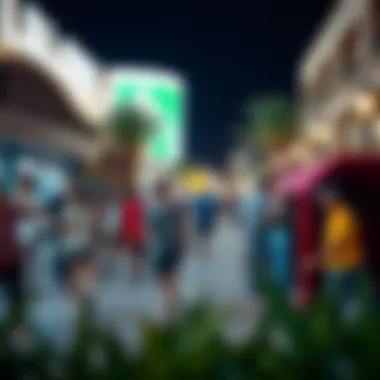
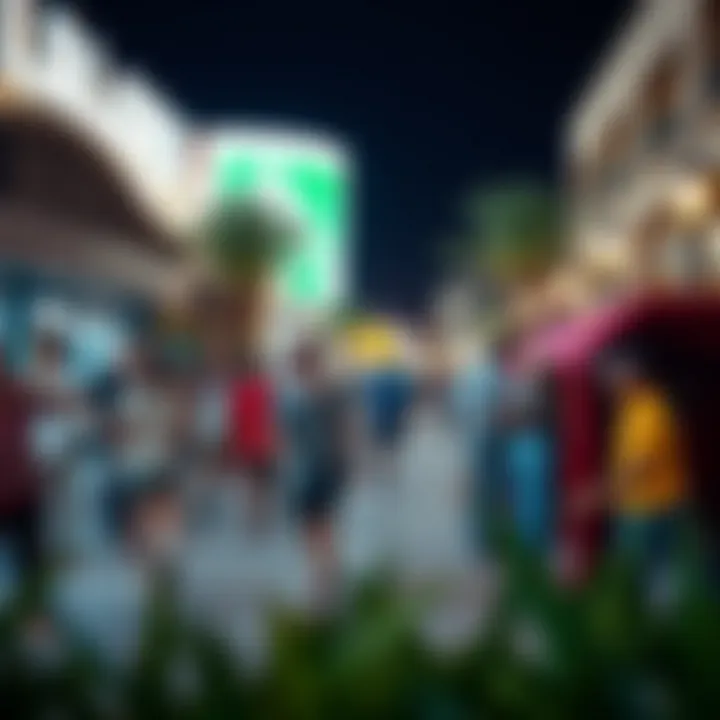
When you think of art, typically, the conversation revolves around creativity, expression, and culture. However, there’s another crucial aspect that often gets overshadowed—property values. In Al Serkal Avenue, the galleries and creative spaces contribute to an increase in nearby property values. Here’s how:
- Cultural Appeal: Properties close to art hubs, like Al Serkal Avenue, are seen as more desirable. This cultural appeal can boost demand, driving property prices up. Investors looking to capitalize on this trend often find themselves in a lucrative position.
- Gentrification: As art scenes flourish, neighborhoods often undergo gentrification. This phenomenon sees an influx of money, which can elevate property values over time. It creates a ripple effect, raising not only residential prices but also commercial spaces that appeal to artistic endeavors.
- Long-term investment: The interplay between art and real estate is now well-documented. Properties in culturally rich environments often demonstrate resilience during economic downturns, making them attractive for long-term investments.
One noteworthy example is the landscape surrounding Al Serkal Avenue. Affordable spaces transformed into multi-talented art galleries and studios have resulted in a noticeable uptick in property prices, with experts predicting further increases as more investors recognize the importance of cultural hotspots.
"Real estate that is intertwined with cultural significance tends to appreciate faster, offering a safeguard against market volatility."
Attracting Investors and Developers
Art isn’t merely a decorative addition to a space; it becomes a pivotal component of the identity of a neighborhood. This unveils a broader perspective for investors and developers. Here are several key aspects to consider:
- Innovative Property Development: Investors are keen on developing properties that integrate art, whether through actual spaces for galleries or by embedding artistic elements into the architecture. This intersection adds unique value that can significantly enhance marketability.
- Networking Opportunities: The art community fosters collaboration, offering invaluable connections for developers. By aligning with artists and galleries, investors can leverage partnerships that propel their projects into the spotlight. For instance, Al Serkal Avenue hosts numerous events where artists and real estate professionals converge, creating collaborative opportunities.
- Market Differentiation: In an era when many properties vie for attention, those that feature art resonate. Incorporating creative elements can set developments apart, appealing not just to buyers but also to renters who seek authenticity in their living and working spaces.
- Investment in Creative Economy: The rise of the creative economy has captured the interest of forward-thinking investors. With a burgeoning artist community, those who invest in art-centric areas support an ecosystem that balances economic and cultural needs.
Developers looking at Al Serkal Avenue are already stepping up their game by integrating art into the essence of their buildings, leading to innovative living solutions that reflect modern lifestyles. As art continues to drive interest in the area, both the property market and the cultural scene benefit from this well-rounded investment strategy.
Community Engagement and Social Impact
The significance of community engagement and its social impact within Al Serkal Avenue cannot be overstated. This vibrant space operates not just as a hub for art and culture but also as a platform that fosters connections among various groups, contributing to a dynamic social fabric. By actively involving local artists and communities in its initiatives, Al Serkal Avenue ensures that its artistic identity is deeply rooted in the cultural landscape of Dubai while continuously evolving.
The Role of Local Artists
Local artists are the lifeblood of Al Serkal Avenue. They bring a distinct flavor to the art scene, reflecting the diversity and character of the city. Their contributions are not limited to exhibitions; they engage in collaborative projects that involve the community. By hosting open studios, workshops, and live performances, these artists create a participatory environment.
- Sense of Belonging: Through engagement, local artists help build a sense of belonging among residents.
- Cultural Exchange: They serve as catalysts for cultural exchange, inviting dialogue between different communities and fostering mutual understanding.
- Economic Opportunities: By participating in the avenue’s numerous initiatives, local talent finds platforms to showcase their work, thus opening doors for economic growth.
One significant aspect of this engagement is the collaboration between established artists and emerging talents. This relationship not only nurtures fresh perspectives but also reinforces the continuity of the art scene. Local artists, through their unique perspectives, contribute to broadening the narrative of Dubai's cultural identity.
Educational Programs and Collaborations
Educational initiatives within Al Serkal Avenue are paramount in bridging art with community learning. The avenue has prioritized educational outreach programs, often partnering with schools, NGOs, and cultural institutes to create immersive learning experiences for various age groups.
- Workshops and Masterclasses: These are designed not just for art enthusiasts but also for individuals new to the medium, helping demystify the artistic process.
- School Partnerships: Collaborating with local schools opens up avenues for students to engage in art firsthand, fostering appreciation from an early age.
- Cultural Exchange Programs: By inviting international artists to teach workshops, Al Serkal Avenue brings in new ideas and practices, enriching the local artistic landscape.
"Art has the power to unite. It's not just about what you create; it’s about who you create it with."
This ethos is evident throughout the avenue, making it a beacon for both established and burgeoning artistic endeavors.
Challenges Facing the Art Scene
Navigating the complex landscape of Al Serkal Avenue's art scene presents its unique set of challenges. While the creative enclave is celebrated for its dynamic artistic ventures, both emerging and established artists often grapple with significant hurdles that can stifle growth and innovation. Addressing these challenges is crucial for the sustainability of the avenue’s cultural identity and its appeal to investors, art enthusiasts, and the overall community.
Market Saturation
One of the critical concerns for Al Serkal Avenue is market saturation. As more galleries, artists, and creative spaces open their doors, the competition becomes stiffer. Although a thriving art market is generally favorable, too many offerings can dilute the audience's attention.
- Overflow of Galleries: The influx of new galleries can lead to diminishing returns, meaning that not every space will be able to sustain itself, especially if they offer similar styles or themes.
- Audience Fatigue: Visitors might experience overload when faced with a plethora of choices, which can lead to decreased interest in both individual artists and the collective offerings of the avenue.
- Emerging Trends: As trends evolve quickly, artists must continuously adapt their work. Failure to keep up can lead them to be eclipsed by more innovative or commercially viable peers.
This saturation requires strategic planning and curated exhibitions that can highlight unique voices within the art community, appealing strongly to both seasoned collectors and casual visitors.
Maintaining Artistic Integrity
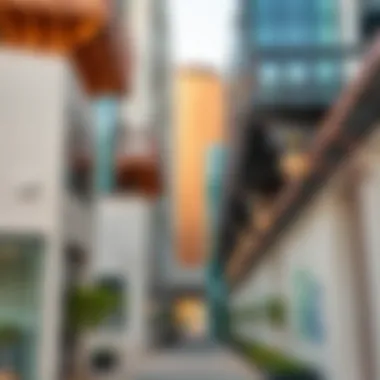
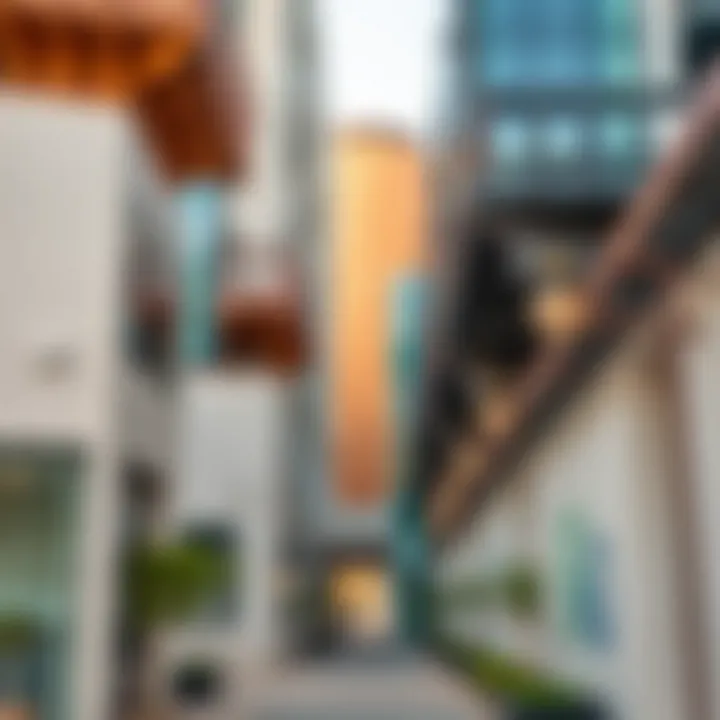
Another pressing issue that artists face on Al Serkal Avenue is maintaining artistic integrity amidst commercial pressures. The intersection of art and commerce can often create tension, requiring artists to balance between pursuing their creative vision and appealing to market demands.
- Commercialization Dilemma: Many artists might feel the urge to alter their work to fit more commercial standards, which can compromise the authenticity of their creative expression. This can lead to art that is more market-driven than personally meaningful.
- Support Systems: Ensuring there is adequate support, mentorship, and funding for artists is vital in helping them to develop their unique styles without succumbing to external pressures.
- Authenticity in Representation: Art spaces should promote a diverse range of expressions while safeguarding the original narratives that artists seek to portray. Curators have the responsibility to champion voices that reflect the richness of the human experience, without bowing to the pressures of commercial viability.
By tackling these challenges head-on, Al Serkal Avenue can maintain its vibrant ecosystem of creativity, ultimately attracting investors who appreciate authentic artistry as well as a growing audience engaged in the sector.
"Art must be an integral part of our development as humans, not just a commodity to be traded."
In summary, while the artistic scene in Al Serkal Avenue is flourishing, it must remain vigilant against the pitfalls of saturation and commercial compromise, ensuring that artistic growth and integrity prevail over fleeting trends.
Future Prospects for Al Serkal Avenue
The future of Al Serkal Avenue seems bright and brimming with potential. As artists, investors, and visitors flock to this vibrant hub, it is essential to consider the overarching trends shaping its destiny in the coming years. The energy within these walls is palpable, driven by innovation and the constant pursuit of cultural advancement. Art and real estate are intertwining in this area, making it an exciting focal point for growth, nourishment of creativity, and a collaborative spirit.
Predicted Trends in the Art Market
While we gaze into the crystal ball regarding art markets, a few emerging trends stand out. Firstly, the rise of digital art cannot be overlooked. With advancements in technology, NFTs (Non-Fungible Tokens) are making their way into mainstream art discussions, attracting both seasoned collectors and new investors seeking to diversify their portfolios. This trend could open doors for Al Serkal Avenue to host exhibitions dedicated to digital mediums, setting a precedent in the Middle East.
Secondly, sustainability is becoming increasingly vital. Artists and galleries are feeling the pressure to engage with sustainable practices, whether through eco-friendly materials, utilizing renewable energy, or participating in community-focused projects. Al Serkal Avenue, with its established community ties, is well-positioned to showcase this shift toward sustainable creativity.
In addition, collaborations between local and international artists may become a staple. This fusion can elevate the visibility of emerging talents in Dubai while attracting admiration from a global audience. The cultural melting pot that is Al Serkal Avenue can potentially serve as the launching pad for groundbreaking ideas and dynamic art forms, solidifying its reputation well beyond the borders of Dubai.
"Art is the most beautiful of all lies. In a rapidly changing world, every piece tells a story, inviting the viewer to engage with its narrative."
Overall, as the art market continues to evolve, Al Serkal Avenue has the chance to be at the forefront of these transformations, adapting to and embracing new norms, influencing local and global art landscapes.
Real Estate Development Opportunities
The real estate dynamics in Al Serkal Avenue are evolving in a way that provides fertile ground for development opportunities. The ongoing trend of mixed-use developments presents a unique chance for investors. By merging residential, commercial, and artistic ventures, the area can foster a living, breathing community where art is not only celebrated but also a part of everyday life.
Moreover, proximity to other cultural hotspots in Dubai makes Al Serkal Avenue an attractive option for high-net-worth individuals looking for both lifestyle and investment prospects. Developments that cater to art-focused living spaces or commercial properties housing galleries, studios, and co-working spaces could undoubtedly attract interest.
Investors might also want to consider the benefits of adaptive reuse. Many of the industrial spaces can be transformed into modern art venues, restaurants, or creative hubs. This not only preserves the history of the area but also contributes to a fresh identity, enhancing its charm and allure.
In summary, the combination of evolving art markets and real estate development opens up substantial opportunities for Al Serkal Avenue. Investors who are astute and keen on proactive engagement can position themselves to benefit from the anticipated growth in this unique community.
Closure: The Significance of Al Serkal Avenue
Al Serkal Avenue stands as a testament to Dubai's rapid evolution into a global art and culture hub. It is not just a series of buildings housing galleries; it acts as a vibrant community center where creativity thrives. This significance reverberates through various facets—cultural enrichment, economic investment, and the fostering of artistic expression. As we draw this exploration to a close, it’s essential to delve into the key insights gained from examining this iconic locale and what lies ahead.
Summary of Key Insights
Throughout this analysis, several pivotal themes emerged that highlight the essence of Al Serkal Avenue:
- Cultural Transformation: From its industrial roots, the avenue morphed into a dynamic space, hosting various artistic initiatives, making it an essential stop for both local and international art enthusiasts.
- Investment Potential: The growth of art galleries and cultural institutions has boosted property values and attracted investors looking at the intersection of art and real estate.
- Community Engagement: Local artists and community programs play a crucial role in shaping the social fabric, inviting diverse perspectives to participate in the narrative.
- Challenges Ahead: As the scene grows, it must grapple with issues like market saturation and the need to maintain authentic artistic voices while also adapting to commercial demands.
The confluence of these elements paints a rich, multi-layered picture illustrating why Al Serkal Avenue is not merely a showcase for art, but a vibrant ecosystem fostering cultural dialogue and economic growth.
Final Thoughts on Future Developments
Looking ahead, the future of Al Serkal Avenue appears promising, with numerous factors poised to shape its ongoing journey:
- Emerging Trends in Art: The rise of digital art and mixed-media installations could lead to innovative exhibitions that attract a younger, tech-savvy audience.
- Real Estate Opportunities: As the area continues to develop, there's potential for creating spaces that serve both artists and businesses, enhancing profitability for investors and enriching community engagement.
- International Collaborations: Increased global partnerships can introduce diverse influences and foster dialogues between cultures, elevating the avenue's standing on the world stage.
In the coming years, staying attuned to shifts in the art market while prioritizing community voices will be vital for Al Serkal Avenue to sustain its unique identity and growth.
To sum up, Al Serkal Avenue is an influential player in Dubai's cultural landscape. As it evolves, it carries with it the hopes of local creators, investors, and the community, symbolizing an artistic renaissance that intertwines with the city's broader ambitions.
For further insights into Al Serkal Avenue and its developments, consider exploring resources like Wikipedia and Art Dubai.
Understanding this artistic hub is essential not just for those in the art world, but also for investors and property developers keen on tapping into this ever-evolving market.







